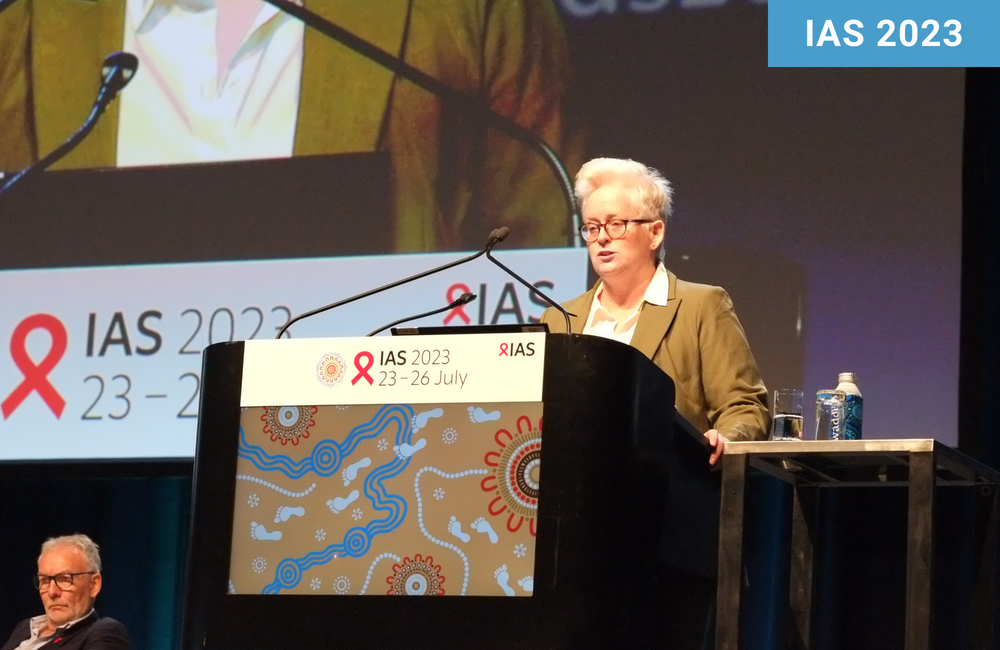
An approach relying on the social connections between men is a promising method for engaging hard-to-reach populations of men in HIV testing, prevention, and treatment. A randomised controlled trial, presented at the 12th International AIDS Society Conference on HIV Science (IAS 2023) in Brisbane, Australia, this week showed a 50% increase in HIV testing among fishermen in Kenya and a 53% increase in linkage to health facilities.
In Africa, men have a higher likelihood of being unaware of their HIV status compared to women. This trend is particularly evident among highly mobile men, such as fishermen, who tend to have low rates of HIV testing and linkage to treatment or PrEP (regular medication to prevent HIV infection).
Dr Carol Camlin of the University of California San Francisco told the conference that the HIV epidemic in Kenya is primarily concentrated in the region surrounding Lake Victoria, where many highly mobile men work in fishing communities. Unfortunately, these men have low rates of HIV testing and treatment, as well as low uptake of PrEP.
The reasons for this include limited access to services at fixed-location clinics that are often far from beaches and have opening hours that do not fit their fishing schedules. Additionally, traditional gender roles that associate health-seeking behaviour with weakness contribute to low engagement with testing and care. Nevertheless, HIV self-testing presents an opportunity to bridge these gaps.
Dr Camlin and colleagues, therefore, conducted a study in Siaya, Kenya, a region with a population of one million, 79 beaches, 38,000 fisherfolk, and an HIV prevalence of between 9.5 and 19%.
The study sought to determine if a social network-based approach could improve testing and linkage outcomes among fishermen via secondary distribution of HIV self-tests and improve linkage to care and prevention among men who test for HIV.
Groups of male fishermen working on three beaches in Lake Victoria with close social connections were clustered together. The researchers asked men who they spent time with, both for work or leisure, and who they might turn to for help with money, health or emotional problems. A highly connected man in each cluster was identified as the ‘promoter’.
The 156 clusters were randomly assigned to either a control or an intervention group.
In the intervention group, the promoters were trained and given multiple HIV self-tests to distribute to other members of their cluster. They were also given transport vouchers worth US$4 to encourage their cluster members to seek HIV treatment or PrEP.
In the control clusters, the promoters were given HIV information and referral vouchers for free self-tests at nearby clinics. They were encouraged to offer these to their cluster members.
A total of 733 men participated at the start of the study. The average age was 37 years; 85% were married, with 22% being in polygynous relationships, and all worked as fishermen or in occupations linked to fishing.
After three months, 666 men participated in the follow-up survey. The results showed that self-reported HIV testing using self-testing was much higher in intervention clusters (60%) than non-intervention clusters (10%). Similarly, HIV testing through any means was also higher in intervention clusters (47% vs. 27%). Moreover, the proportion of individuals linked to ART or PrEP evaluation after testing was significantly higher in intervention clusters (70% vs. 17%).
Encouraging men to involve their male friends in prioritising their health can positively impact social norms and increase men's use of health services. Utilising social networks can be particularly effective in reaching mobile populations for treatment and prevention.
This is especially important given other data presented at the conference showing a higher HIV prevalence among fishing communities along the coastal corridor of West Africa than in the general adult population of their countries. The Integrated Biological and Behavioral Surveillance Survey estimated HIV prevalence in fishing communities for Cote d’Ivoire (3.4%), Ghana (2.2%), Togo (2.5%) and Nigeria (1.6%). Benin had both the highest rate (4.6%) and the largest difference compared to the general population (0.9%). Few respondents had recently received free condoms, safer sex information or HIV testing.
Camlin CS et al. A social network-based intervention increases HIV self-testing and linkage to health facilities among fishermen in Kenya. 12th International AIDS Society Conference on HIV Science (IAS 2023), Brisbane, Australia, abstract OALBX0103, 2023.
View the abstract on the conference website.
Integrated Biological and Behavioral Surveillance Survey among fishing community along Cote d'ivoire, Ghana, Togo, Benin and Nigeria coastal and ICASA 2023 Zimbabwe. 12th International AIDS Society Conference on HIV Science (IAS 2023), Brisbane, Australia, satellite SAT032, 2023.
View the details of this session on the conference website.
